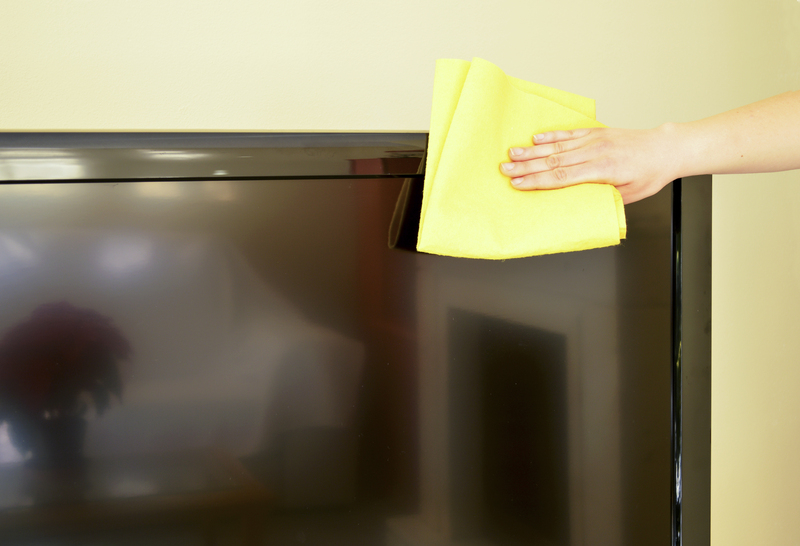Keep Your Window Sills Clean and Mould-Free: Your Complete Guide
If you've ever spotted black or green patches creeping along your window sills, or noticed a musty odor lingering in the air, you've encountered the all-too-common nuisance of mould on window sills. As humble as they may seem, window sills play an essential role in the appearance, health, and hygiene of every room. In this comprehensive guide, you'll discover why keeping your window sills clean and mould-free is vital, plus actionable steps and expert tips for ongoing care.
Why Keeping Your Window Sills Clean and Mould-Free Matters
- Prevents Health Risks: Mould can release spores and mycotoxins, triggering allergies, asthma, or respiratory issues, especially in sensitive individuals.
- Preserves Home Aesthetics: Mould and dirty window sills tarnish the beauty of your rooms--clean sills look bright and welcoming.
- Enhances Durability: Dirt, dampness, and mould can deteriorate wooden and painted window frames, leading to expensive repairs or replacements.
- Stops Unpleasant Odors: Mould emits a distinctive, musty smell that can quickly permeate your home.
- Boosts Property Value: Well-maintained, clean window sills demonstrate attention to detail for homebuyers and tenants.

Understanding the Causes of Window Sill Mould
Before you can effectively prevent mould on window sills, it's necessary to understand what causes this frustrating issue.
1. Condensation and Moisture
Condensation occurs when warm, humid indoor air meets the colder surface of a window, causing water droplets to form. This persistent moisture creates an ideal environment for mould growth.
2. Poor Ventilation
Lack of adequate airflow, especially in kitchens, bathrooms, and bedrooms, leads to excess humidity. Stagnant air allows moisture to settle on surfaces like window sills and encourages mould spores to flourish.
3. Leaking Windows
Cracked seals or damaged caulking around windows can let rainwater seep in, soaking the sills beneath. This continuous dampness accelerates the onset of mould and mildew.
4. Dirt and Organic Material
Dust, pollen, and other organic debris act as food for mould. Without regular cleaning, sills quickly become a breeding ground for unwelcome fungi.
How to Prevent Mould Growth on Your Window Sills
The good news? With a strategic approach, it's easy to keep your window sills clean and mould-free for the long haul. Below is a thorough, step-by-step plan for both prevention and proactive maintenance.
Step 1: Maximize Ventilation
- Open your windows every day, even for just 10-15 minutes, especially after showers or cooking.
- Install extractor fans in high-moisture areas (bathroom, kitchen).
- Ensure air vents are unobstructed and functioning properly.
- Use a dehumidifier if your home is prone to dampness.
Step 2: Address Leaks Promptly
- Inspect window seals and caulking for cracks, gaps, or weathering.
- Reseal or repair any damaged areas using weatherproof caulk.
- Check roof and wall flashing near windows for proper sealing.
Step 3: Regular Deep Cleaning
- Set a calendar reminder for monthly window sill cleaning.
- Use a microfiber cloth to dust and remove debris.
- Wash sills with a gentle solution of warm water and mild soap.
- Dry thoroughly to prevent lingering moisture.
Step 4: Use Natural Mould Inhibitors
- Add a little white vinegar to your cleaning water--it naturally kills mould spores and prevents regrowth.
- Baking soda can be used as a gentle abrasive on tough stains and also neutralizes odours.
- A few drops of tea tree oil in water is a well-known anti-fungal solution.
Step 5: Minimize Indoor Humidity
- Hang wet laundry outdoors where possible, or use a vented dryer.
- Keep lids on pans while cooking and use the range hood extractor.
- Cover fish tanks and regularly empty dehumidifier water tanks.
How to Remove Mould from Window Sills: A Practical Step-By-Step Guide
If you're already facing a mould problem, don't worry. With the right approach, you can rescue your sills and restore both health and style to your living spaces. Here's how to get rid of mould on window sills safely and effectively.
What You'll Need
- Protective gloves and a mask (to avoid inhaling spores or coming into contact with irritants)
- Microfiber or disposable cloths
- White vinegar, baking soda, or a commercial mould remover
- An old toothbrush or soft scrub brush
- Warm soapy water
- Paper towels or dry cloths for drying
Step-by-Step Mould Removal Process
-
Prepare the Area:
- Open a window for fresh air and to help vent spores.
- Lay an old towel or plastic sheet beneath the sill to catch drips and debris.
-
Apply Your Cleaning Solution:
- For light mould, soak a cloth in vinegar or your chosen solution and gently wipe the area.
- To combat stubborn patches, sprinkle baking soda first, then scrub gently with the brush dipped in vinegar.
- Alternatively, follow the instructions on your commercial mould remover.
-
Scrub the Sill:
- Work carefully to avoid spreading spores or damaging painted/wooden surfaces.
- Repeat as needed until all visible mould is gone.
-
Rinse and Dry Thoroughly:
- Wipe down the sill with clean, warm water.
- Use paper towels or a dry cloth to remove all traces of moisture--for best results, let the window and sill air dry for several hours.
-
Dispose and Wash:
- Discard disposable cloths immediately in an outdoor bin.
- Wash reusable cleaning items using hot water and detergent.
Never mix bleach and vinegar--this combination releases toxic fumes. While bleach is sometimes recommended for mould, it can damage wooden window sills and is harsh on the lungs.
Best Products for Cleaning and Protecting Window Sills
- White Vinegar: Safe, natural, and effective on most surfaces. Kills up to 82% of mould species.
- Baking Soda: Absorbs moisture, scrubs away stains, and eliminates odours.
- Commercial Mould Sprays: Look for EPA-approved products designed for household use. Always follow safety directions.
- Microfiber Cloths: Trap dust and mould spores without spreading them into the air.
- Essential Oils: Tea tree oil, eucalyptus, and clove oil have natural anti-microbial properties--simply add a few drops to your cleaning mix.
How Often Should You Clean Your Window Sills?
The key to keeping your window sills clean and mould-free is consistency. As a general rule:
- Weekly: Quick wipe-downs to remove dust, pollen, or condensation.
- Monthly: Deep cleaning with vinegar or a mould-inhibiting solution.
- After Heavy Rain or Snow: Check for leaks or damp patches and dry as needed.
- Seasonally: Inspect caulk, weatherproofing, and repaint or reseal wooden sills if required.
Pro Tips to Keep Your Window Sills Permanently Mould-Free
- Install trickle vents or window vent stops for ongoing airflow--even in winter.
- Trim back plants and foliage outside windows, preventing overhanging branches from increasing shade and dampness.
- Upgrade to double-glazed or insulated windows to reduce condensation risks.
- Apply anti-mould paint on vulnerable wooden and masonry sills for extra protection.
- Use moisture-absorbing crystals or silica gel packs on deep window sills prone to dampness.
- Monitor indoor humidity (ideally 40-60% relative humidity) with an inexpensive hygrometer.
Window Sill Materials and Their Unique Cleaning Requirements
Wooden Window Sills
- Never leave the surface wet for long; water causes swelling, cracking, and persistent mould.
- Go easy on scrubbing--use a soft brush and test vinegar on a hidden area first.
- Refinish with varnish, anti-mould paint, or a wood sealant every few years.
PVC/uPVC Window Sills
- Easy to clean with diluted vinegar or soap water--avoid harsh abrasive pads that can scratch the surface.
- Check joints and edges where water can accumulate unseen.
Stone or Tile Window Sills
- Porous stone can harbor mould inside tiny crevices--seal with a stone sealer annually.
- Mild detergent and water are usually sufficient, but avoid acidic cleaners on marble or natural stone.
When to Call a Professional: Persistent or Severe Mould Cases
While most household cases can be handled with regular window sill cleaning, it's wise to seek help in certain situations:
- The mould patch is larger than 1m2 (approx. 3 ft2). Extensive infestations may signal hidden damp problems.
- Repeated returns of mould despite thorough cleaning and improved ventilation.
- Visible rot, crumbling wood, or sills that feel soft to the touch--these may require full replacement.
- Mould caused by major leaks, flooding, or structural issues (such as subsidence or damaged brickwork).
- If anyone in your home has ongoing health issues aggravated by mould.

FAQs: Keeping Window Sills Clean and Mould-Free
Can I use bleach to clean mould from window sills?
Bleach can kill surface mould, but it does not penetrate porous materials like wood and may actually damage finishes, cause discoloration, or irritate lungs. White vinegar is usually a safer, effective option.
Why does mould keep coming back after cleaning?
Recurring mould on window sills is a sign that moisture, humidity, or poor ventilation hasn't been fully resolved. Identify the underlying cause and address it to stop regrowth.
How can I prevent condensation on window sills?
Keep rooms well ventilated, use a dehumidifier where needed, and avoid drying clothes on radiators. Consider upgrading to double-glazed or thermally broken windows to minimize cold surfaces.
Is mould on window sills dangerous?
Small, isolated patches are usually easy to remove, but large or persistent growth could indicate hidden dampness and pose health risks. Always wear gloves and a mask when cleaning--and seek professional help for serious problems.
Conclusion: Take Charge of Your Window Sill Health
To keep your window sills clean and mould-free, just a little regular attention goes a long way. By promoting good ventilation, controlling moisture, removing dirt, and responding quickly to mould, you can protect your home, health, and wallet. Take pride in windowsills that stay beautiful, bright, and healthy all year long--and never worry about unsightly stains or musty odours spoiling your sanctuary again.
*Make window sill cleaning part of your regular cleaning routine, and you'll enjoy clearer views, cleaner air, and peace of mind in every room.*


